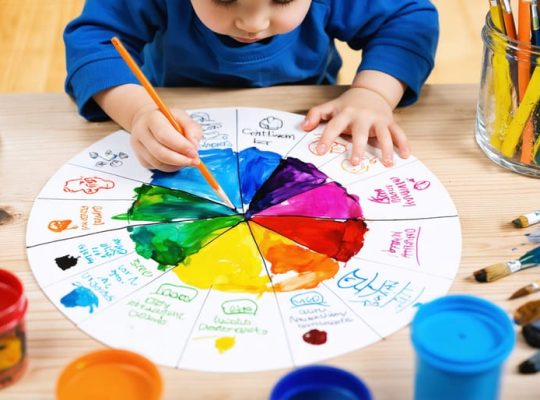Resilience – our remarkable ability to bounce back from adversity – shapes how children and adults navigate life’s challenges. In psychology, particularly within AP Psychology frameworks, resilience represents more than just “toughing it out.” It’s a complex interplay of cognitive adaptability, emotional regulation, and social support systems that enable individuals to maintain psychological well-being despite stress or trauma.
Understanding resilience through the lens of psychological science reveals why some people emerge stronger from difficulties while others struggle. This dynamic capacity develops through a combination of inherited traits and learned skills, making it both a natural gift and a muscle we can strengthen. For parents, educators, and mental health professionals, grasping the psychological foundations of resilience opens doors to nurturing this vital quality in themselves and others.
Recent research in developmental psychology highlights how resilience functions as a protective factor against various mental health challenges, from everyday stress to major life transitions. By examining resilience through both scientific and practical perspectives, we can better understand how to foster this essential life skill in our communities, classrooms, and families.
Understanding Psychological Resilience in Children

Core Components of Psychological Resilience
Children who demonstrate strong psychological resilience typically share several key protective factors. First, they have at least one stable, caring relationship with a supportive adult – whether a parent, teacher, or mentor. This secure attachment provides them with a safe foundation to explore and overcome challenges.
Self-regulation skills form another crucial component, allowing children to manage their emotions and behaviors effectively when faced with stress. These children can identify their feelings and have strategies to calm themselves when upset.
Problem-solving abilities also play a vital role. Resilient children approach difficulties with a growth mindset, viewing challenges as opportunities to learn rather than insurmountable obstacles. They’re able to break down problems into manageable steps and seek help when needed.
Social connections contribute significantly to resilience. Children who maintain healthy relationships with peers and participate in community activities develop stronger coping mechanisms. These connections provide emotional support and different perspectives on handling adversity.
Finally, a sense of personal agency – the belief that they can influence their circumstances – empowers children to take positive action rather than feeling helpless when facing difficulties.
How Resilience Develops in Young Minds
Resilience in young minds develops gradually through a combination of experiences, relationships, and learning opportunities. During early childhood, children begin to develop coping mechanisms as they learn to express big feelings and navigate challenges. Dr. Sarah Thompson, a child psychologist, explains, “Each time a child overcomes a small obstacle, they build confidence in their ability to handle future challenges.”
This development occurs through various channels: supportive relationships with caregivers, exposure to manageable stress, and opportunities to practice problem-solving. When children receive consistent emotional support while facing age-appropriate challenges, they learn that difficulties are temporary and manageable.
Key experiences that contribute to resilience development include:
– Overcoming everyday obstacles
– Receiving encouragement after setbacks
– Learning from mistakes in a safe environment
– Building strong attachments with caregivers
– Developing emotional awareness
Parents and educators play crucial roles by creating environments where children feel safe to take risks and learn from failures. This foundation of emotional security becomes the bedrock upon which lasting resilience is built.
Literature as a Tool for Building Resilience

Selecting Age-Appropriate Stories
When selecting stories to build resilience in children, it’s essential to match the content with their developmental stage and emotional readiness. For younger children (ages 3-6), look for simple stories with clear messages about perseverance, like “The Little Engine That Could.” These stories should feature relatable characters facing manageable challenges that children can easily understand.
For elementary school-aged children (ages 7-11), choose books that explore more complex emotional situations while maintaining an optimistic outlook. Stories about overcoming setbacks, making friends, or adapting to change work particularly well at this age. The characters should demonstrate problem-solving skills and emotional growth throughout their journey.
Teenagers benefit from stories that tackle real-world challenges while offering hope and practical coping strategies. Look for books that address relevant issues like academic pressure, social relationships, or identity development. These stories should validate their experiences while showing various ways to bounce back from difficulties.
Consider these key factors when selecting stories:
– Age-appropriate emotional content
– Positive role models who demonstrate resilient behavior
– Clear but not oversimplified solutions
– Realistic challenges that children can relate to
– Culturally diverse characters and situations
– Stories that encourage discussion and reflection
Remember that every child processes information differently, so be prepared to adjust your selections based on individual responses and comfort levels.
Using Stories to Process Emotions
Stories have long served as powerful tools to help children understand and navigate their emotional landscape. When young readers encounter characters facing challenges similar to their own, they gain valuable insights into how to process big emotions and develop resilience.
Through storytelling, children can safely explore difficult feelings like fear, anger, or sadness from a comfortable distance. When they see beloved characters overcome obstacles, they learn that challenging emotions are normal and manageable. For example, when a child reads about a character dealing with first-day-of-school anxiety, they might recognize their own feelings and discover coping strategies.
Picture books and chapter books focusing on emotional themes provide children with a vocabulary to express their feelings and understand others’ perspectives. Parents and teachers can use these stories as conversation starters, helping children connect narrative elements to their own experiences.
Dr. Sarah Thompson, a child psychologist, notes: “Stories act as emotional mirrors and windows. They reflect children’s own experiences while offering glimpses into new ways of handling difficult situations. This dual function makes literature an invaluable tool for building emotional resilience.”
Reading together also creates safe spaces for discussing complex feelings, allowing adults to model emotional awareness and healthy coping strategies while strengthening bonds through shared experiences.
Practical Applications in Daily Life
Reading Together Techniques
Reading together can be a powerful tool for building resilience in children and teens. When we share stories, we create opportunities for meaningful discussions about overcoming challenges and developing inner strength. Start by choosing books that feature characters facing and overcoming obstacles – these stories naturally spark conversations about resilience.
Create a cozy reading environment where your child feels safe to explore difficult emotions. As you read, pause occasionally to ask open-ended questions like “How do you think the character feels right now?” or “What would you do in this situation?” This encourages reflection and emotional awareness.
Use the “pause and predict” technique, stopping at crucial moments to discuss what might happen next. This helps children develop problem-solving skills and consider different perspectives. When characters face setbacks, explore their coping strategies together and discuss how these might apply to real-life situations.
Practice “emotional bridging” by connecting story events to your child’s experiences. For example, “Remember when you felt nervous about your first day of school? The character is feeling something similar now.” This helps children recognize that challenging feelings are normal and manageable.
End reading sessions with positive reflection, highlighting moments of strength and resilience in the story. This reinforces the message that difficulties can be overcome with persistence and support. Remember, these reading sessions aren’t just about story comprehension – they’re about building emotional tools for life.

Follow-up Activities and Discussions
To reinforce resilience concepts, try these engaging activities with children or students:
1. Story Circle: Have participants sit in a circle and share personal stories of overcoming challenges. Each person describes what helped them bounce back, encouraging reflection on resilience strategies.
2. Resilience Role-Play: Create scenarios where characters face setbacks. Let children act out different ways to respond, promoting problem-solving and creative emotional expression.
3. Gratitude Journal: Start a daily practice of writing three things that went well, helping build positive perspectives even during difficult times.
4. Resilience Tree: Draw a tree where roots represent support systems, trunk represents inner strengths, and branches show goals and dreams. This visualizes personal resilience resources.
Discussion Questions:
– What does being resilient mean to you?
– Who helps you feel stronger when things are tough?
– What strategies do you use to calm down when upset?
– Can you think of a time when you bounced back from disappointment?
Remember to create a safe, supportive environment where everyone feels comfortable sharing. Celebrate small victories and normalize the experience of facing challenges while focusing on growth and recovery.
These activities can be adapted for different age groups and settings, making them versatile tools for building resilience awareness and skills.
Understanding and developing psychological resilience is a journey that requires patience, dedication, and consistent practice. As we’ve explored throughout this article, resilience isn’t just about bouncing back from adversity – it’s about growing stronger through life’s challenges and developing the mental tools to face future obstacles with confidence.
Remember that building resilience in children and adolescents is a collaborative effort between parents, educators, and mental health professionals. By implementing the strategies we’ve discussed, such as fostering positive relationships, encouraging problem-solving skills, and maintaining optimistic yet realistic perspectives, we can help young people develop this crucial life skill.
It’s important to recognize that resilience looks different for everyone. What works for one child may not work for another, and that’s perfectly normal. The key is to remain flexible and adaptable in your approach while maintaining consistent support and encouragement.
As you move forward in supporting resilience development, keep in mind that small steps can lead to significant changes. Celebrate progress, no matter how minor it may seem, and remember that setbacks are natural parts of the growth process. By modeling resilient behavior and creating supportive environments, we can help the next generation develop the psychological strength they need to thrive in today’s challenging world.
Together, we can nurture resilient minds that are better equipped to handle life’s ups and downs while maintaining positive mental health and well-being.





